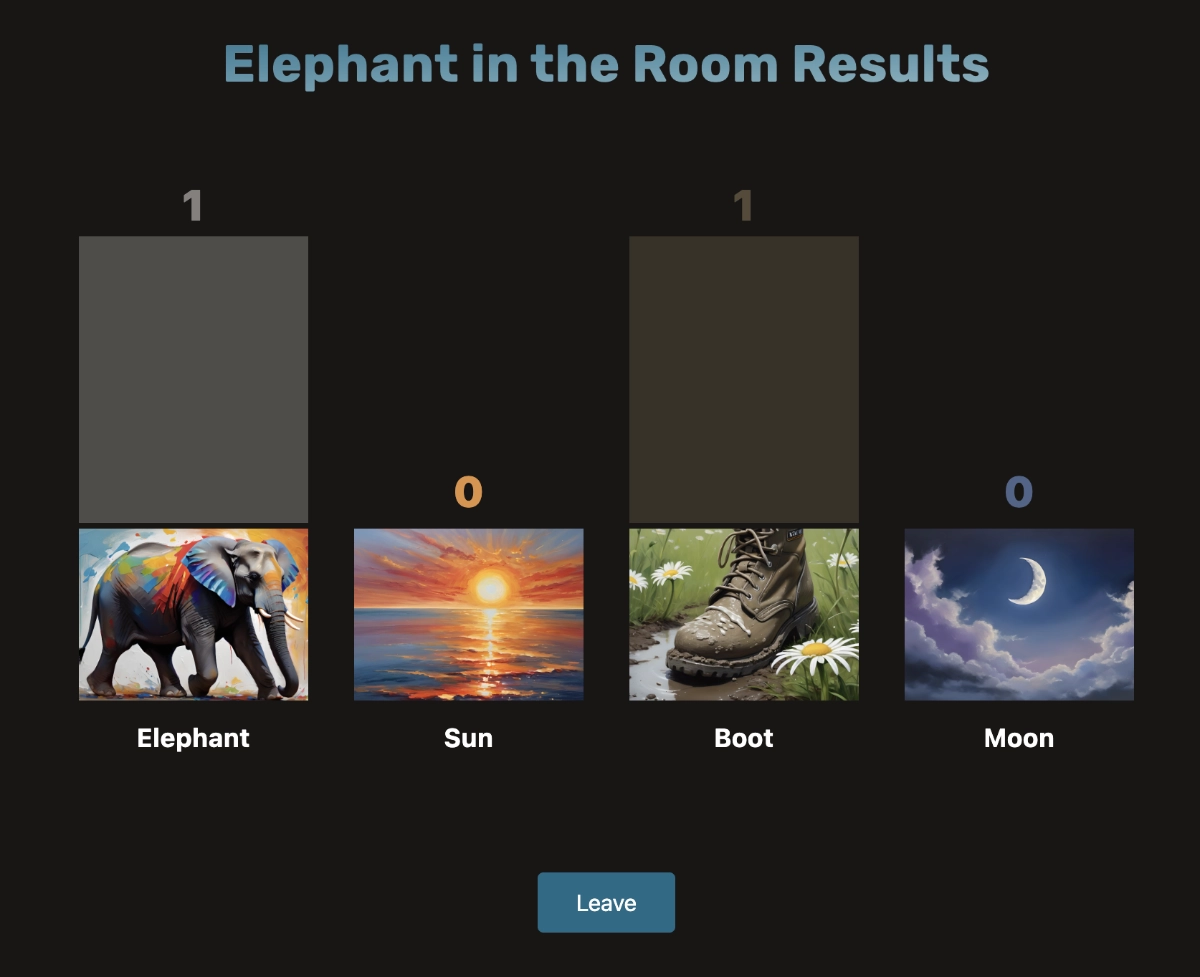Elephant in the Room Guide
Introduction
The Elephant in the Room check-in exercise is a self-reflection tool that helps individuals identify if they have any unspoken issues or feel ill treated in the team. It is a great way to gauge the psychological safety in a team and to address any unspoken issues that might be hindering the team’s performance
Use Cases
- Setting the Stage: Use Elephant in the Room to create a safe and open environment for discussing sensitive topics during meetings or workshops. It can help address unspoken issues and promote psychological safety within the team. Even if the group is not comfortable talking there and then it can help to identify issues and open the team to approach them later.
- Check-in Exercise: Elephant in the Room can be used as a check-in exercise for any team meeting or retrospective. It allows team members to express their current state of mind and encourages open communication.
How to Play
Participants choose one of four pictures that best represents their current state of mind:
- Elephant - There is an elephant in the room, but no one is talking about it.
- Boot - I feel like I am being treated unfairly.
- Sun - I feel good and everything is going well.
- Moon - I am neutral or not comfortable sharing my feelings.
Inviting Participants
- Create the game
- Use the link or QR code to invite people
Running the Game
- When people join they will be asked to choose one of the four pictures that best represents their current state of mind.

- Hovering the question mark by each picture will show a description of the picture.
- People can change their choice at any time during the game.
Debrief
Click “Show results” to see the distribution of choices made by the participants.

Facilitator Tips
- Emphasize that this exercise is anonymous, and there are no right or wrong answers.
- Avoid asking participants to reveal their choices. The goal is to understand the overall mindset of the group.

